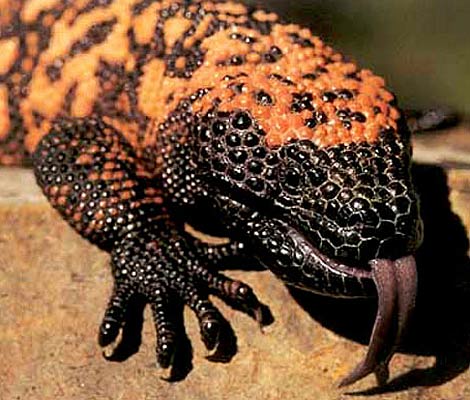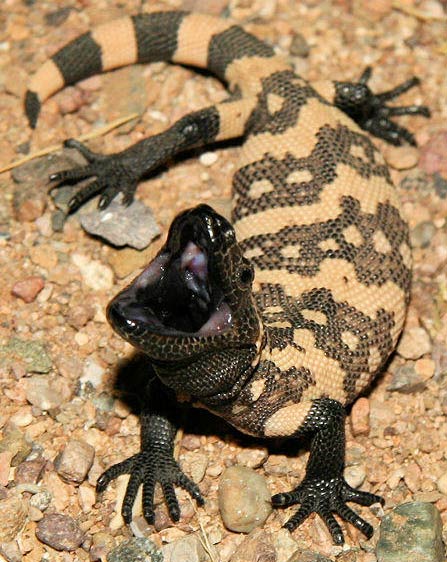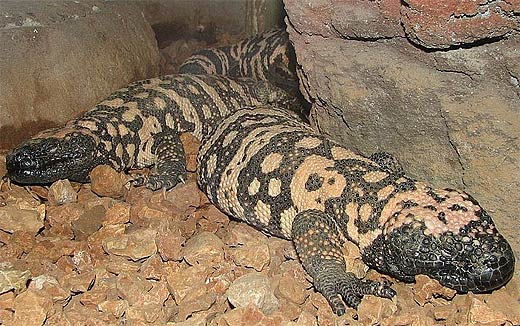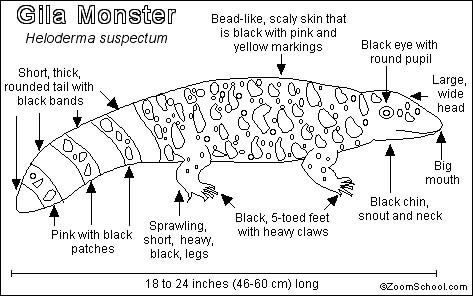Gila Monster – One Lethargic, Venomous Lizard

The Gila monster (pronounced HEE-luh) is a large venomous lizard that can be found primarily in the Southern United States and Northwestern Mexico. Its body is black, and boasts intense patterns of orange and yellow. It is one of only two venomous lizard species and the only venomous lizard native to the United States; however, it poses very little threat to humans, as it is excessively slow and heavy. It is thought that the venom bite is only for defensive use as they don’t need much for the prey they eat. They can grow up to 2 ft (60 cm) long, and can live to be up to about 20 years old in captivity.

Native Americans had a very mixed opinion about this lizard throughout history. Some tribes thought the Gila monster brought good fortune and healing to their people, while other tribes believed it was poisonous, and a bad omen. Because of this, the Gila was often hunted and killed. Now, however, it is a federally protected threatened species.
Their diet consists mainly of eggs stolen from the nests of other creatures; it would seem that they are almost too slow to hunt anything else! Occasionally, they will also eat small rodents and animals, such as pack rats, rabbits, and birds. They rarely need to drink, as its prey provides enough hydration for the lizard’s needs. In fact, a well-nourished monster should not need to drink any water at all.

During the summer, this lazy lizard spends nearly all of its time in its underground burrows. Because it has nearly no natural predators, it can and often does freely hang around in its burrow’s opening. When night falls, the rest of its time is spent looking for food. Sometimes, the Gila can be found basking in the desert sun, but this is not terribly often, as the orange and black monster is a primarily nocturnal creature.

The most fascinating thing about the Gila monster is, undoubtedly, its tail. Within the tail is a large storage of fat and water for the creature’s future needs. During the winter, they burrow deep into the ground to hibernate. The functional tail ensures that the creature will be nourished enough to make it through to the next spring.
